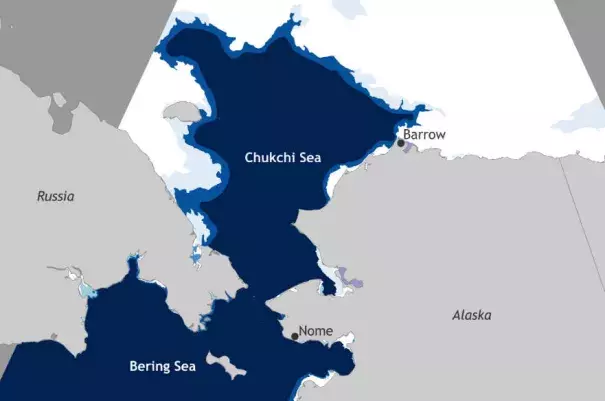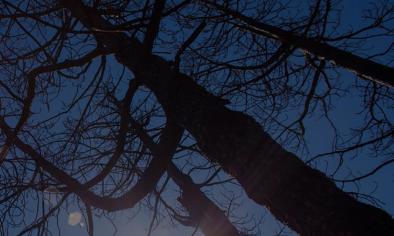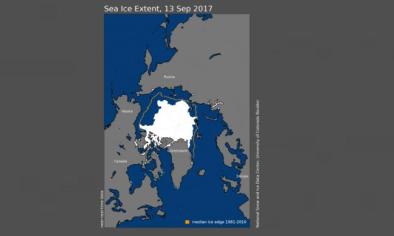Arctic Sea Ice Hits Record Lows Off Alaska

When Arctic sea ice extent hit its annual low-point for the year in September, it clocked in at the eighth lowest on record—far better than had been feared in projections earlier in the year. But that ranking doesn't tell the whole story.
As we enter December, the Chukchi and Bering Seas, which border Alaska on its western and northern sides, have unprecedented areas of open water and the least amount of ice ever recorded there.
"Certainly we've never seen anything quite like this before," said Mark Serreze, the director of the National Snow and Ice Data Center.
In recent years, the Chukchi Sea has reached 95 percent coverage about 2.5 weeks later than it did in the late 1970s, when satellites first started recording sea ice. This year, according to Rick Thoman of Alaska's Weather Service, it's falling even further behind.
...
Early this summer, scientists aboard the research vessel Norseman II found an influx of warm, Pacific water near the Bering Strait about a month earlier than usual and measured water temperatures as high as 5 degrees Fahrenheit above the historical average. "There's just a hell of a lot of heat there," Serreze said.
As that water made its way up Alaska's coast, it was like a "double whammy," he said. The warm water flows in and helps melt the ice, and the dark water that's exposed absorbs heat from the Sun. Melting begets more melting, Serreze explained. "You're going to keep a lot of open water there for quite some time this year."
In addition to that warm water coming through the Bering Strait, Alaska has been hit by significant storms this fall. "The stronger winds and waves destroy the thinner ice," said Mary-Beth Schreck, a sea ice analyst with the National Weather Service Alaska Sea Ice Program.
Related Content




